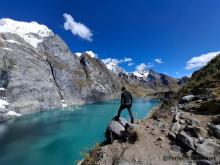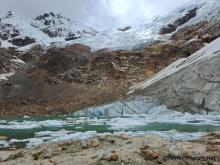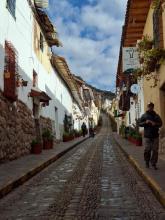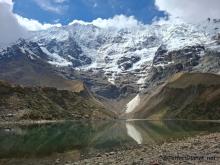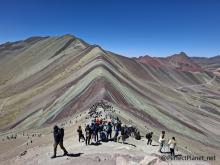Peru.
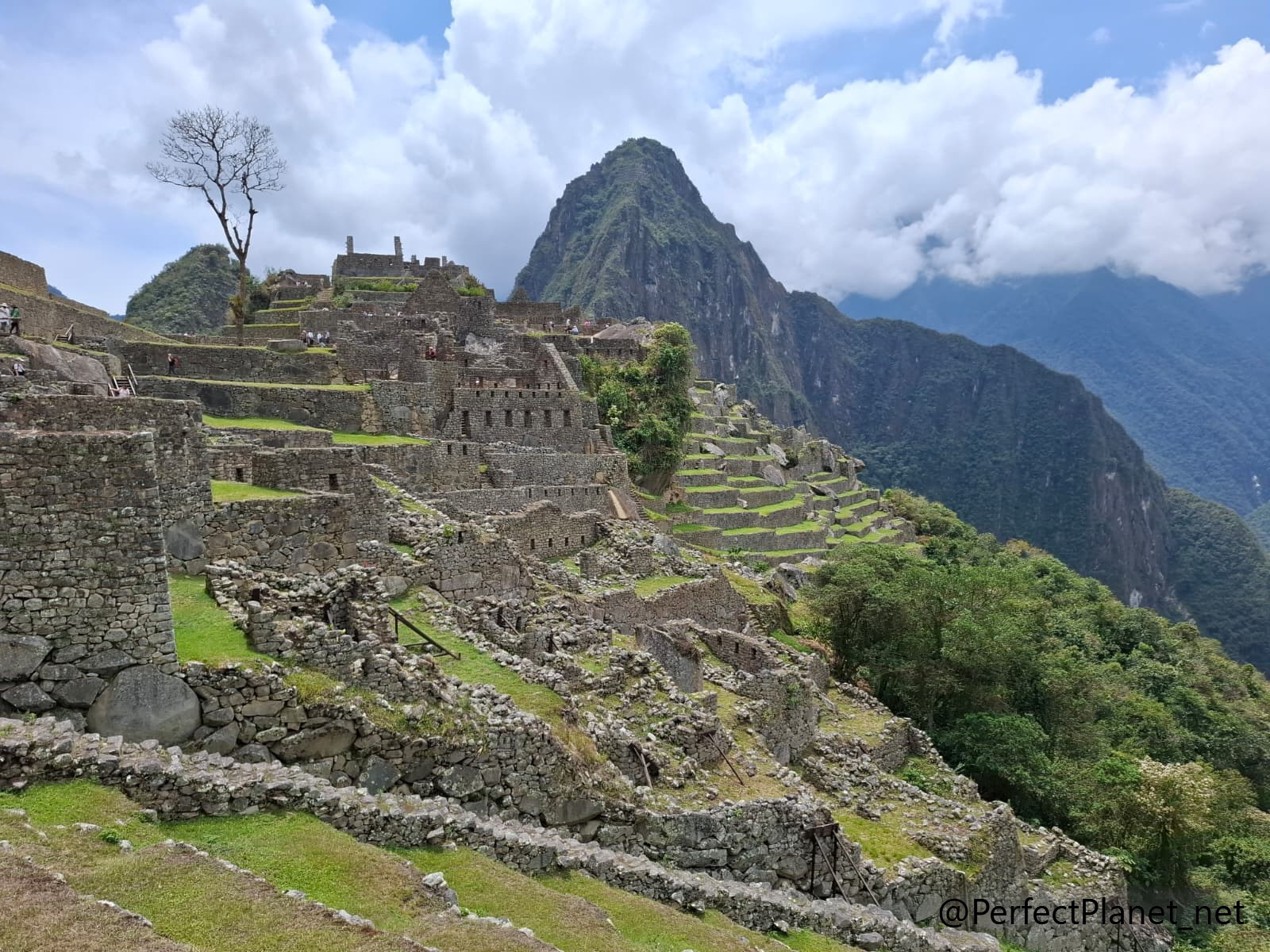
Machu Picchu
Drawn by Inca culture and the Andes mountains, we embarked on this three-week journey, during which we were fascinated to discover not only incredible landscapes, but also wonderful people, renowned cuisine and a wide amalgam of customs and cultures that blend with modernity.
Visa
Spanish citizens do not need a visa to enter Peru for stays of less than 180 days. A passport with at least 6 months' validity is required.
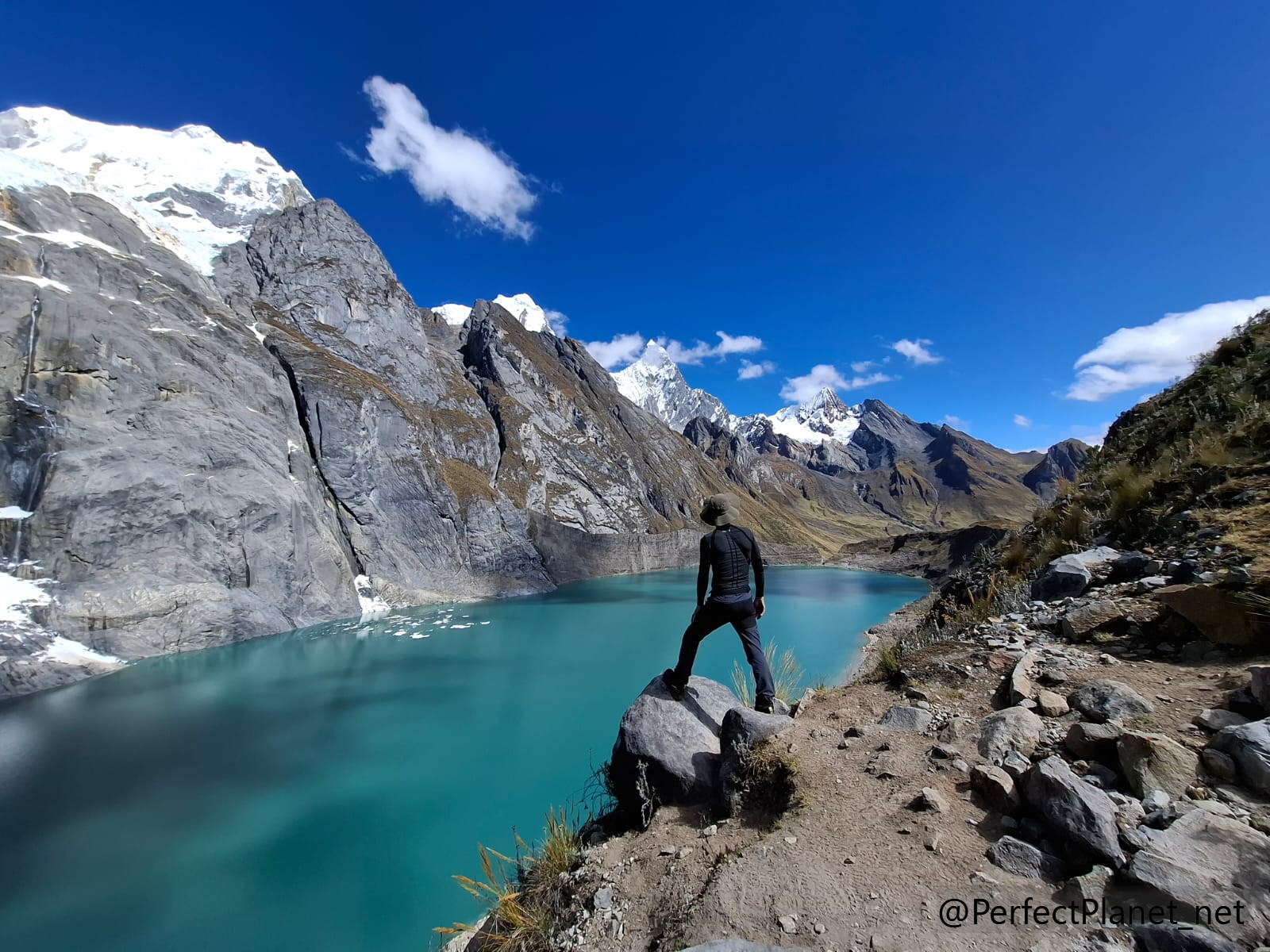
Huayhuash
Currency
The official currency of Peru is the sol (€1 = 4 soles). Almost all expenses are paid in soles, except for some tourist agencies that accept payments in dollars and/or euros. For example, to buy a bus ticket to/from Machu Picchu citadel, dollars and soles are accepted, but it is one of the few places where they are accepted.
Currency exchange. You can exchange currency at the airport (where you always get the worst exchange rate), at banks in each city, and at official exchange offices. We exchanged currency at an exchange office in Huaraz and got a very good rate.
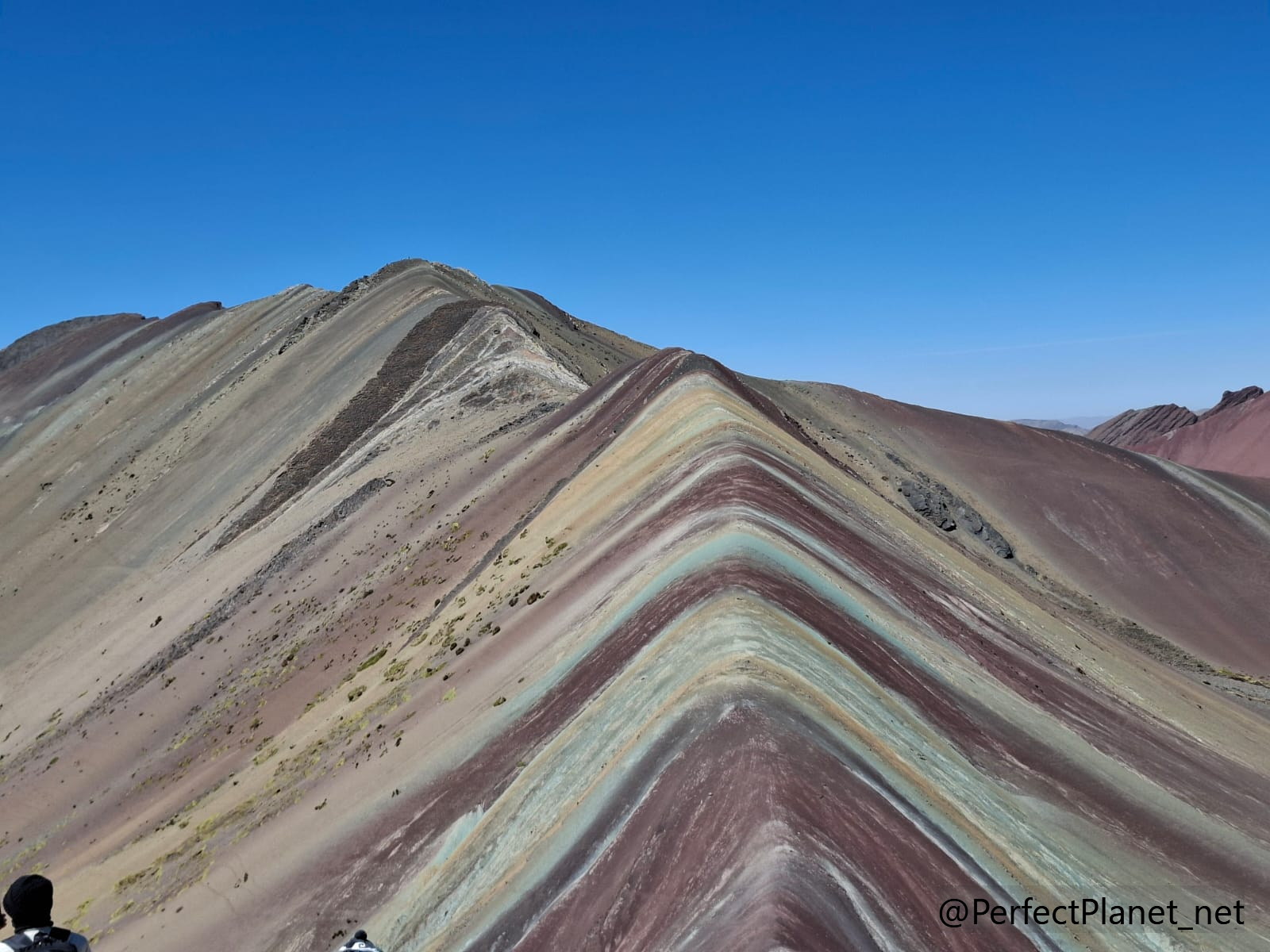
Vinicunca
Remember: Lima and Arequipa airports have ATMs and currency exchange offices, but Huaraz and Cuzco airports do not, so if you need cash, you will have to get it in the city centre.
At Lima Airport, the minimum amount of soles that can be exchanged for euros is the equivalent of €20.
You can also withdraw money from ATMs. We recommend using the Revolut card. Although it is not 100% commission-free, at least you will not be charged by your own bank. However, the commission charged by the bank that owns the ATM varies depending on the bank. BBVA charged a commission of 38 soles for withdrawing 400 soles, while INTERBANK charged only 25 soles for the same amount.
The best cards to travel abroad whitout fees
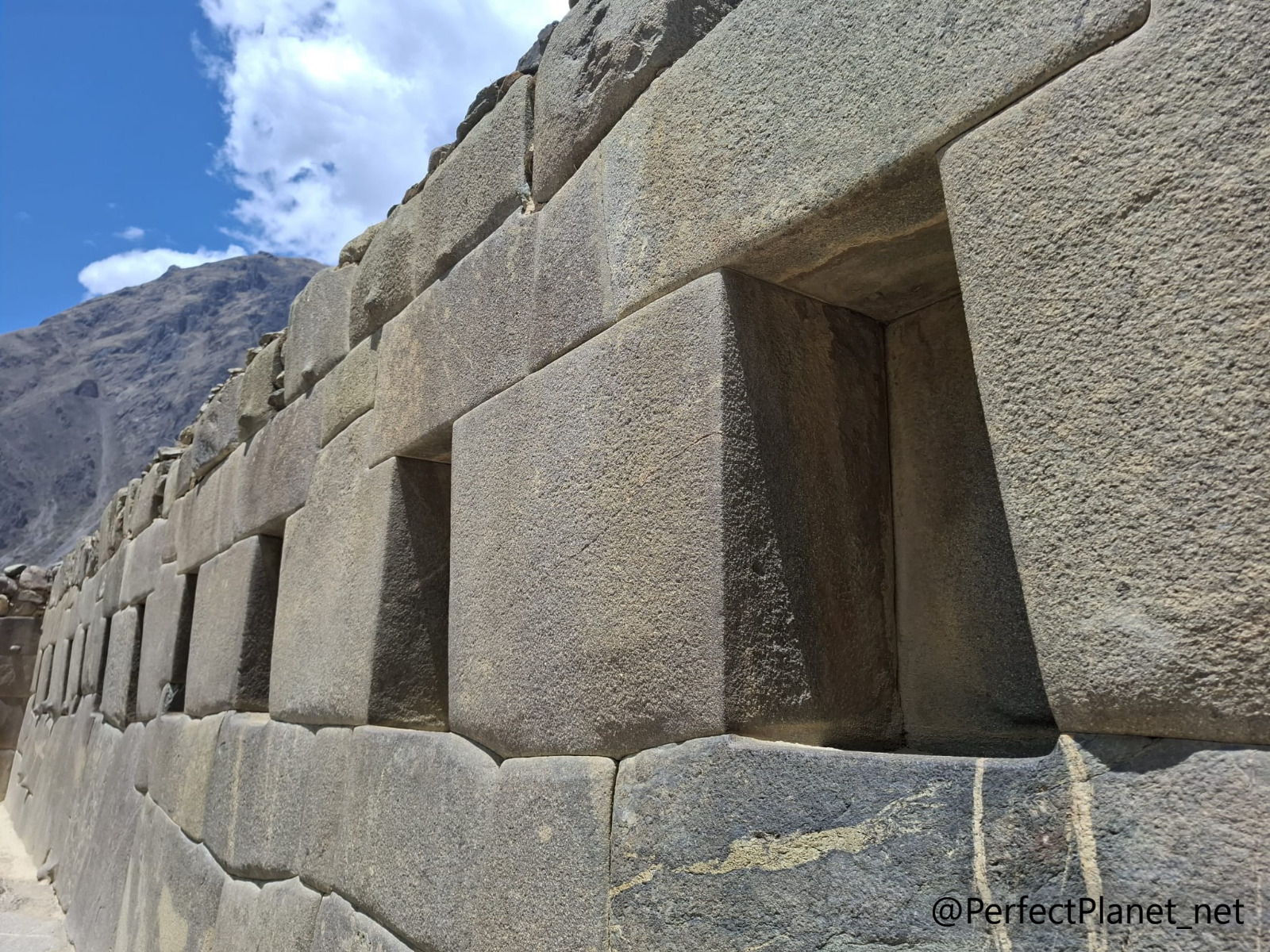
Ollantaytambo
Language
Peru has three official languages: Spanish, Quechua and Aymara, which coexist with other indigenous languages.
Transport
How easily and quickly you can get around Peru will depend on your chosen means of transport.
Airplane. As a general rule, this is the fastest means of transport (although many flights are delayed on a daily basis), but it is also the most expensive and the most comfortable. Be aware if you have connections with checked baggage, as it takes a long time to come out, with an average wait of 45 minutes.
There are airports in the country's main cities. The most modern is in Lima, as a new terminal was inaugurated in July 2025. Access to the airport is chaotic due to traffic, so allow an extra hour to arrive on time. In theory, the new terminal should improve access, but this is not the case.
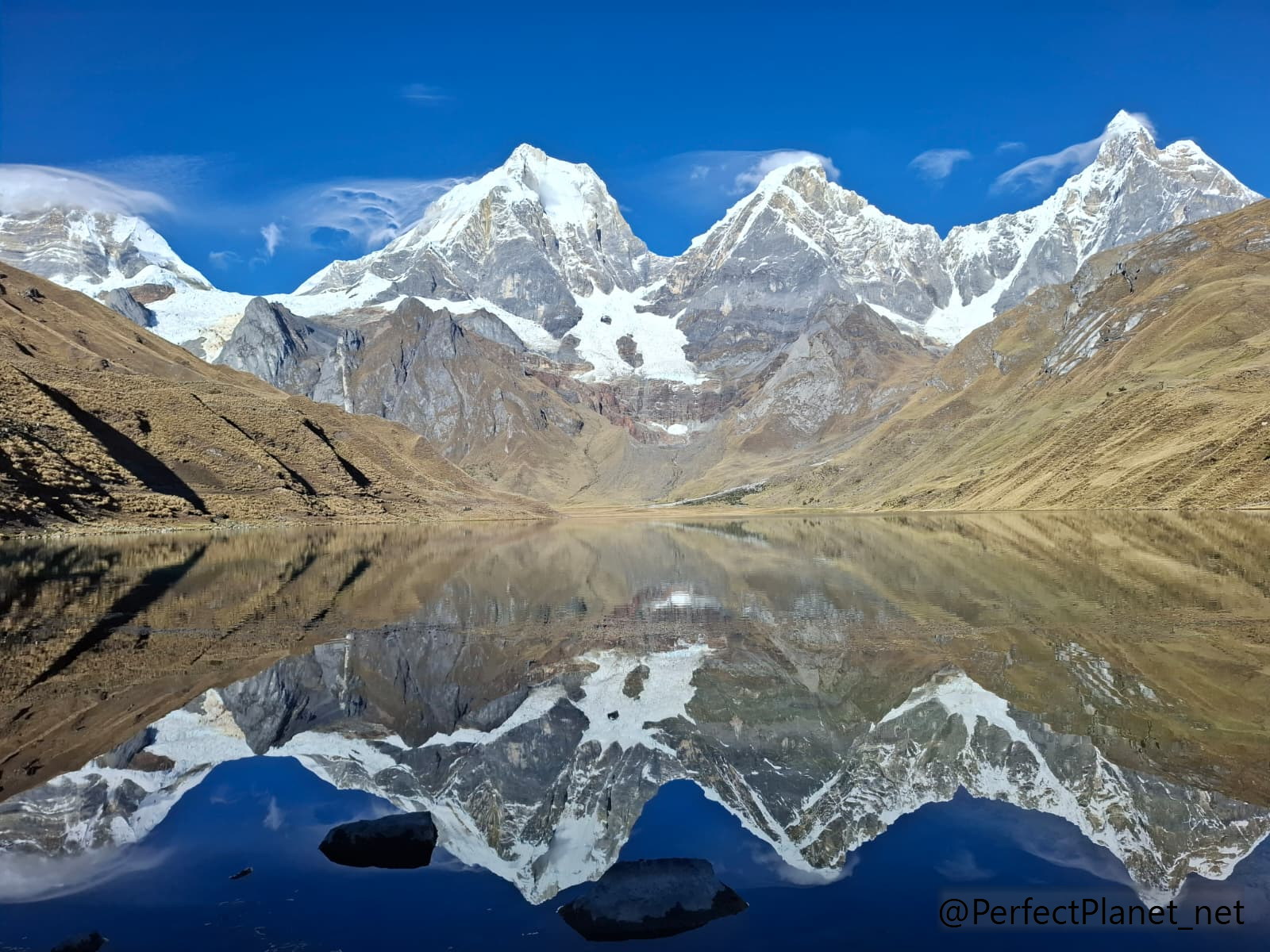
Huayhuash
Bus. The bus is the cheapest but also the slowest means of transport. If you are not in a hurry, it is the ideal option as it connects all towns and cities in the country. There are even night bus options. They do not usually stop for lunch; the longest stop is usually when they wash the outside of the bus.
Van. Tourist vans are slightly more expensive than buses but are faster and well organised. They cover all tourist destinations.
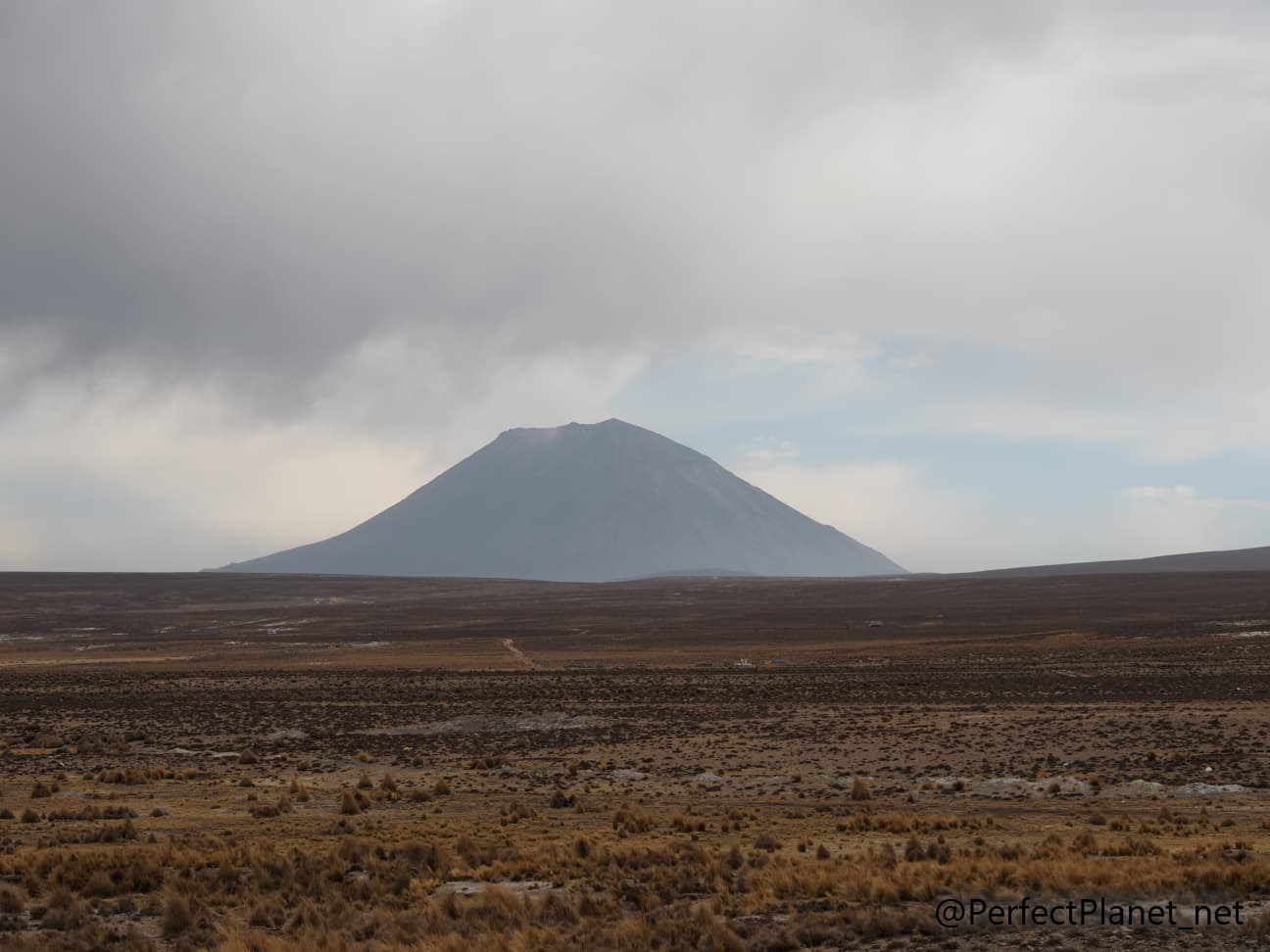
Volcán Misti
Taxis and Uber. These are the best options for short trips within cities. Although there are usually shuttles from airports to the city centre, taxis are not usually very expensive, but only use official taxis, especially in Lima.
Uber works very well in Peru. With the app, you can get an idea of how much the journey will cost so you can negotiate with the taxi driver.
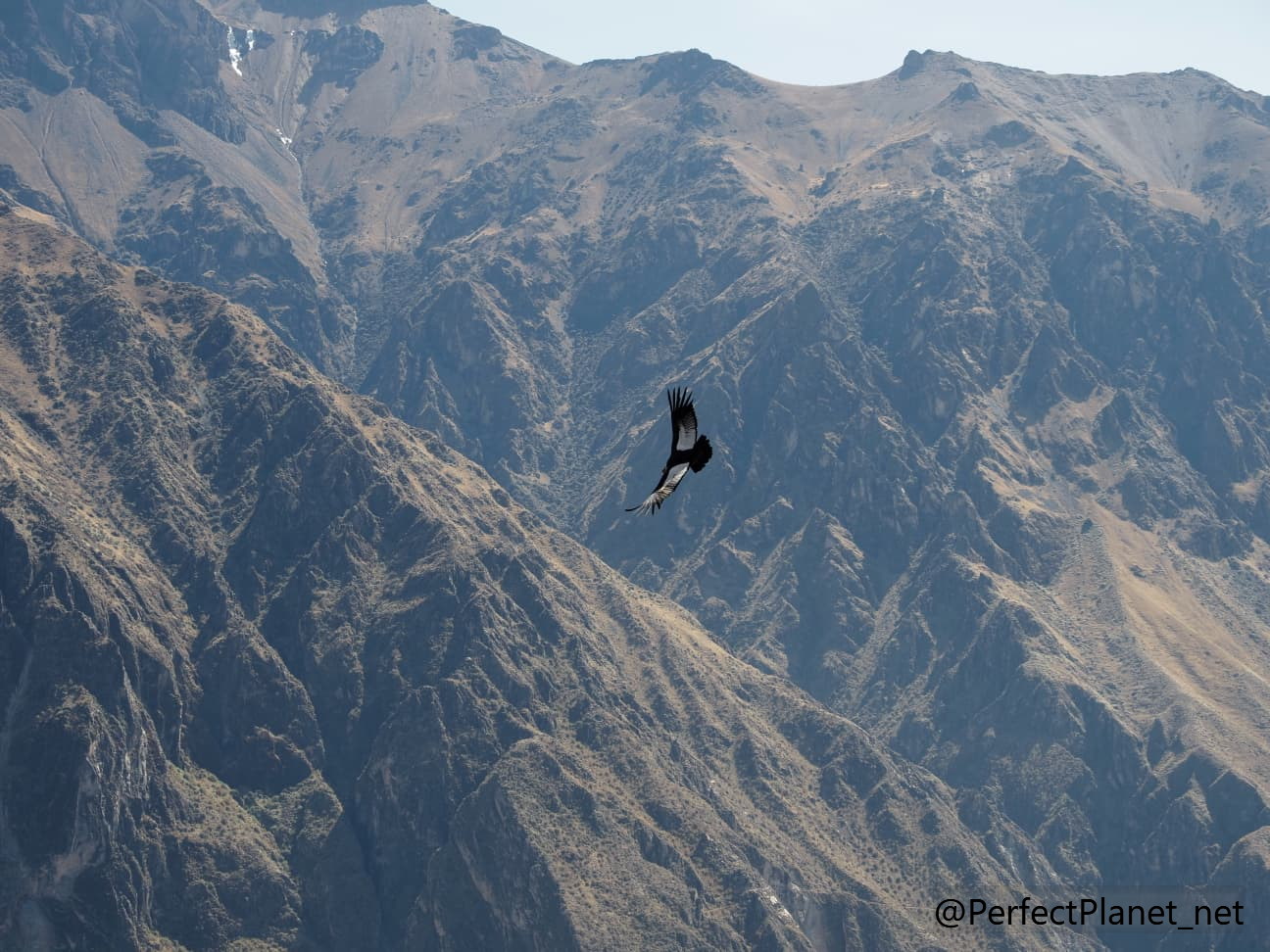
Condor
Train. The Peruvian railway network consists solely of freight trains and the tourist train to Machu Picchu. We heard about a line called Ferrocarril Central that connects Lima with the Andes, but we don't know if it's operational.
The companies Inca Rail and Peru Rail operate the service between Cuzco and Machu Picchu, with the cheapest one-way fare starting at $80 per person. There is supposedly a service connecting Cuzco with Puno, but we do not know anyone who has used it.
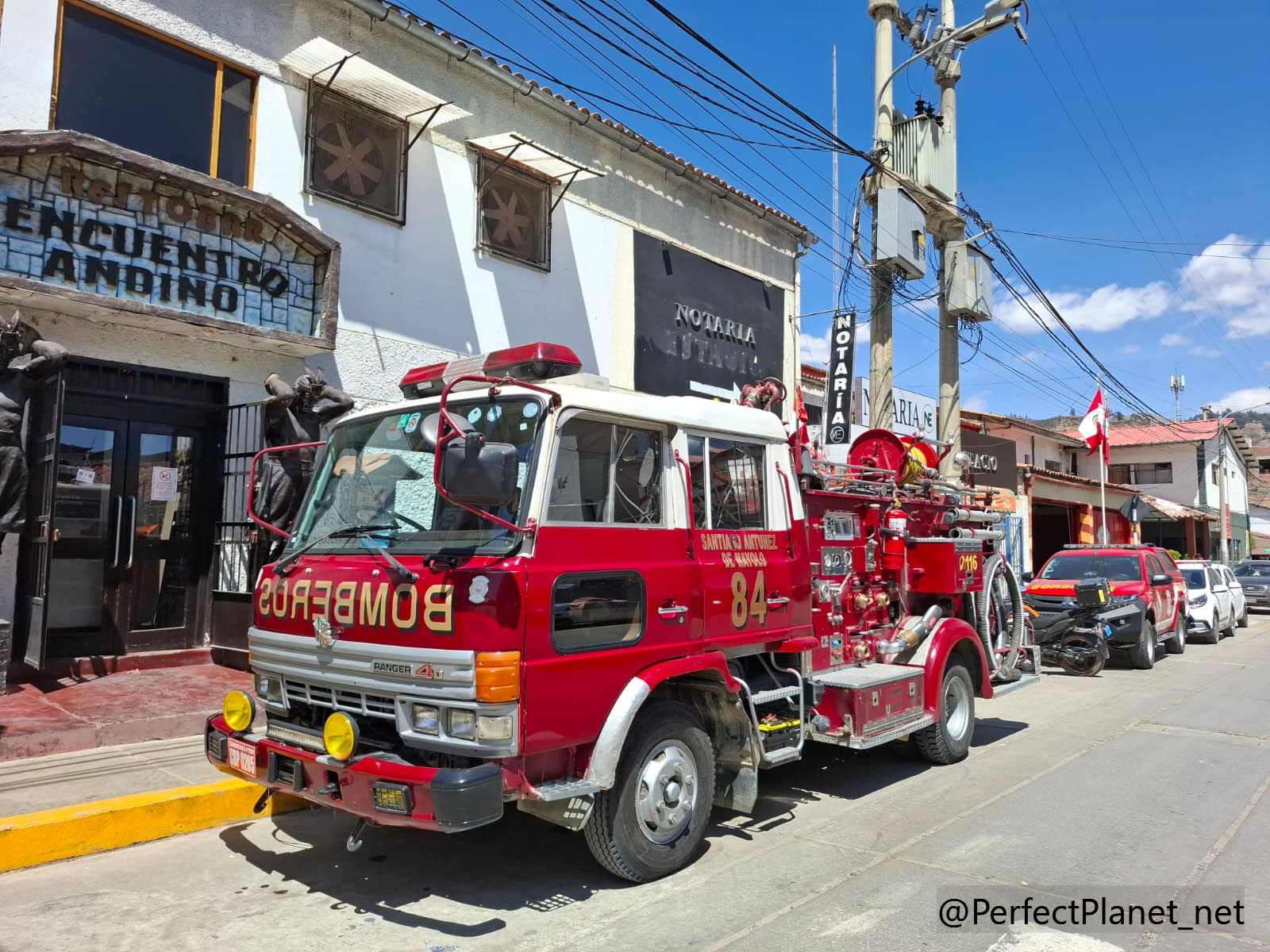
Huaraz
Accommodation
In Peru, you can find accommodation to suit all budgets, from elegant boutique hotels to shared rooms in any B&B.
In general, mid-range and low-cost accommodation does not have heating or air conditioning. The buildings are not well insulated, so it is important to avoid the noisiest areas to get a good night's sleep. It is usually cold inside (especially in cities above 2,500 metres), but all accommodation provides extra blankets for sleeping.
We recommend the following budget accommodation:
In Huaraz, Sunrise Guest House offers double rooms with bathroom and breakfast included for $14 per night. It also has rooms with shared bathrooms. The breakfast is delicious and varied.
In Cuzco, Big Vacation Hostel is located between Borreguitos Street and the road to the archaeological site of Sacsayhuaman. It offers double rooms with bathroom for $19 per night, breakfast included. It has a kitchen service, so you can prepare something simple yourself or they can prepare it for you. Delicious food at affordable prices for Cuzco, beef stir-fry for 15 soles, pisco sour for 8 soles.
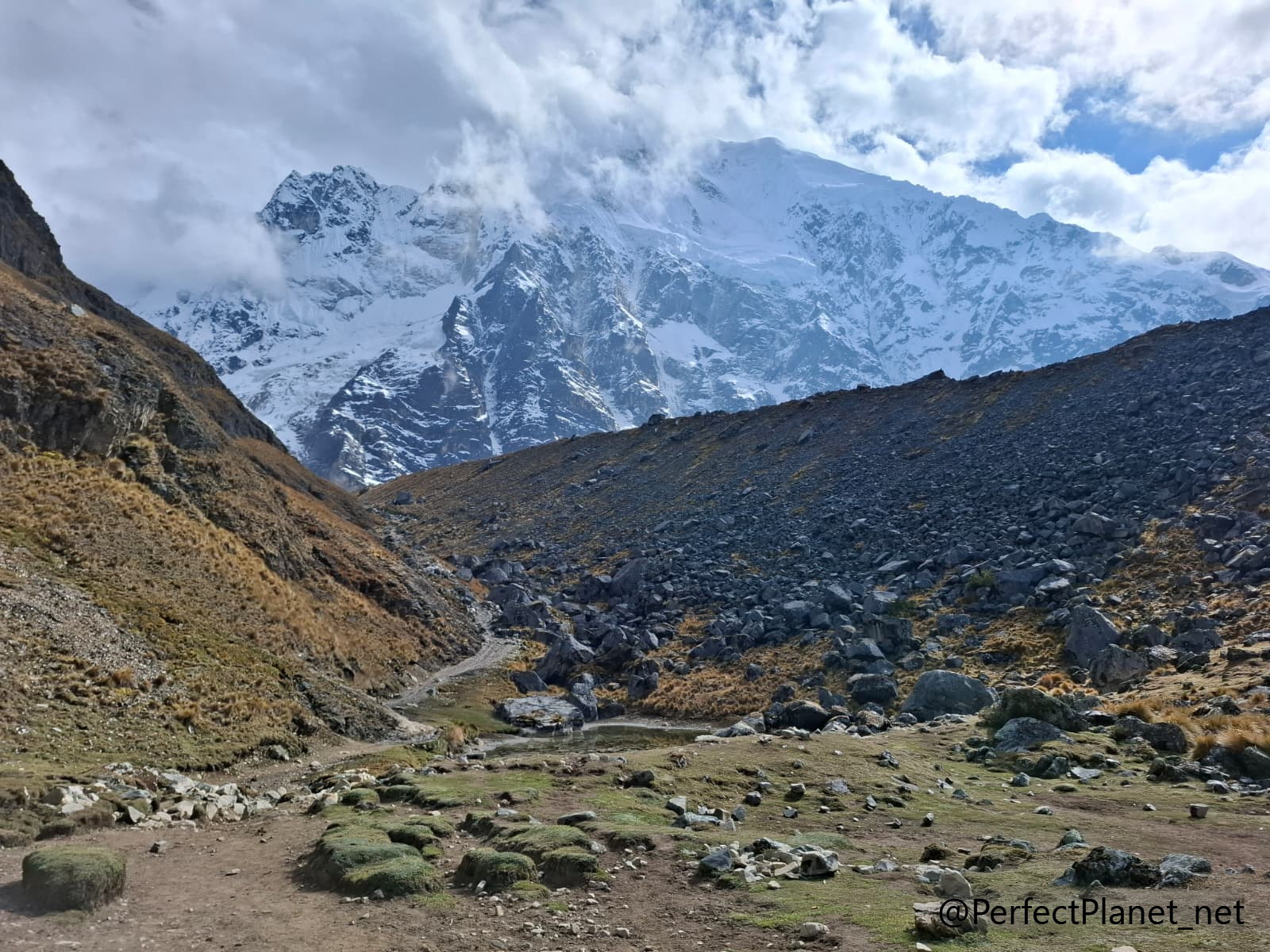
Salkantay
In Machu Picchu town (formerly Aguas Calientes), Inkas Land. It offers double rooms with bathroom and buffet breakfast included for $34 per night. It is located three minutes' walk from the train station next to the souvenir market.
In Arequipa, Casa el Errante. They have converted a beautiful colonial house into a charming hotel in Arequipa. It offers double rooms with bathroom for $19 per night. It has an incredible rooftop.
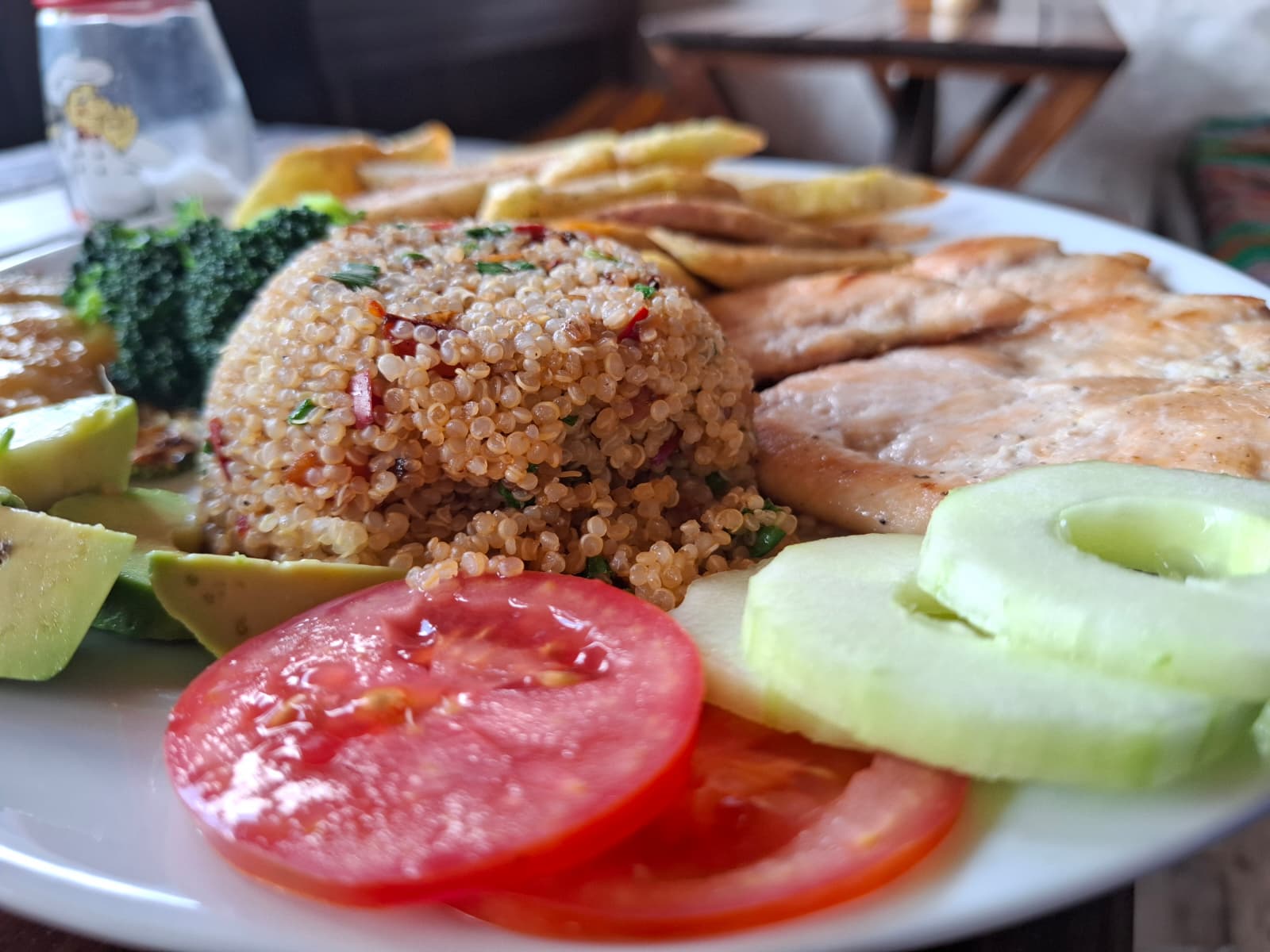
Quinoa
Health
Before starting your trip, always contact the international health service. Don't forget to pack a first aid kit with the essentials: medicines, betadine, antibiotic ointment, syringes, headlamp, bandages, plasters, scissors, mosquito net, mosquito repellent, sun cream.
It is essential that you take out travel insurance that includes medical coverage. We recommend IATI Mochilero, the best insurance for travelling to Peru. You will find a 5% discount on our website.
Safety
Peru is a fairly safe country, with the exception of Lima. In recent years, the Peruvian government has worked to reduce insecurity, especially in large cities such as Cuzco and Arequipa. However, you should always keep an eye on your belongings, especially in crowded areas.
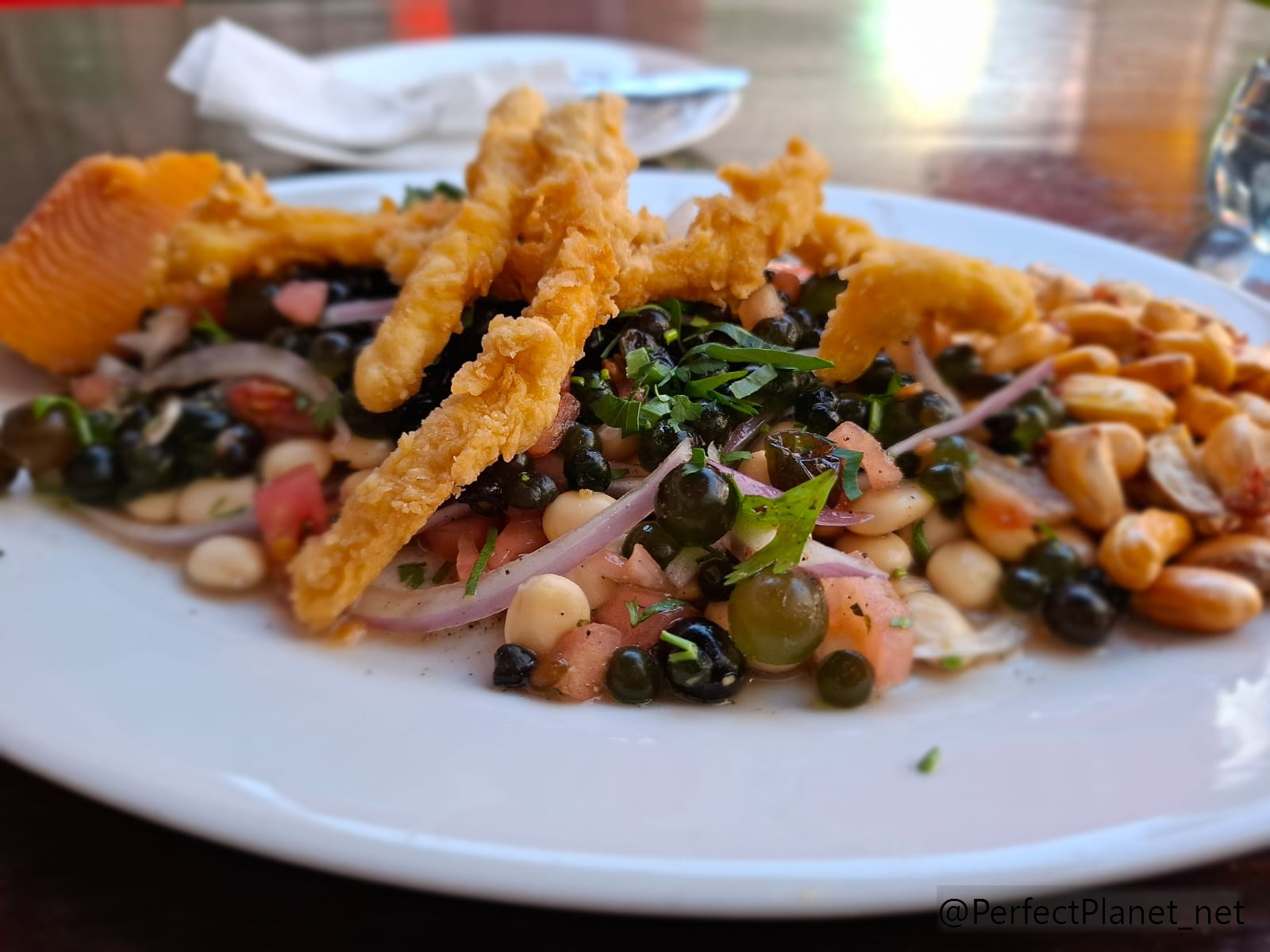
Cevichocho
Gastronomy
Peru is one of the most internationally renowned culinary destinations, and with good reason. Variety and fusion with cultural influences from other countries are its main ingredients.
Many people base their trip on visiting world-renowned restaurants and even spend several days taking cooking classes.
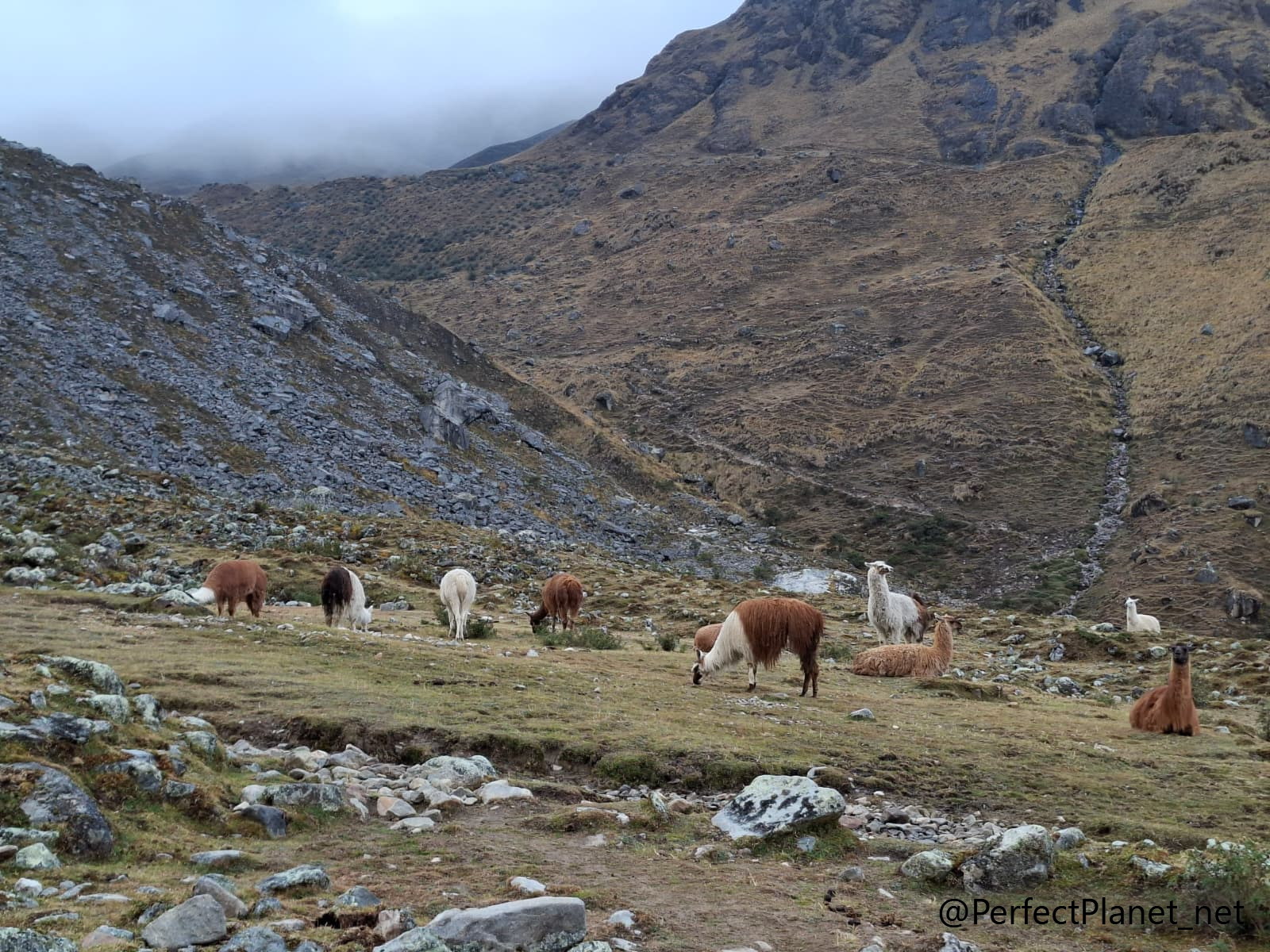
Alpacas y llamas
Dishes you can't miss if you visit Peru
Ceviche. A dish of pieces of fish, onion and citrus fruits, accompanied by leche de tigre (tiger's milk). Inland, it is mostly made with trout, which, although not native to Peru, is a predatory animal that was introduced from North America and has wiped out many endemic species.
Chochos. In the Huaraz area, they prepare a ceviche (Superchocho) made from lupins with seaweed from nearby lagoons, accompanied by meat or fish. It is truly impressive. We recommend the Superchocho restaurant in Huaraz.
Cuy. Picante de cuy is a traditional Peruvian dish. Cuy is a guinea pig that is served roasted and fried so that the skin is crispy. It is accompanied by potatoes and spicy vegetables.
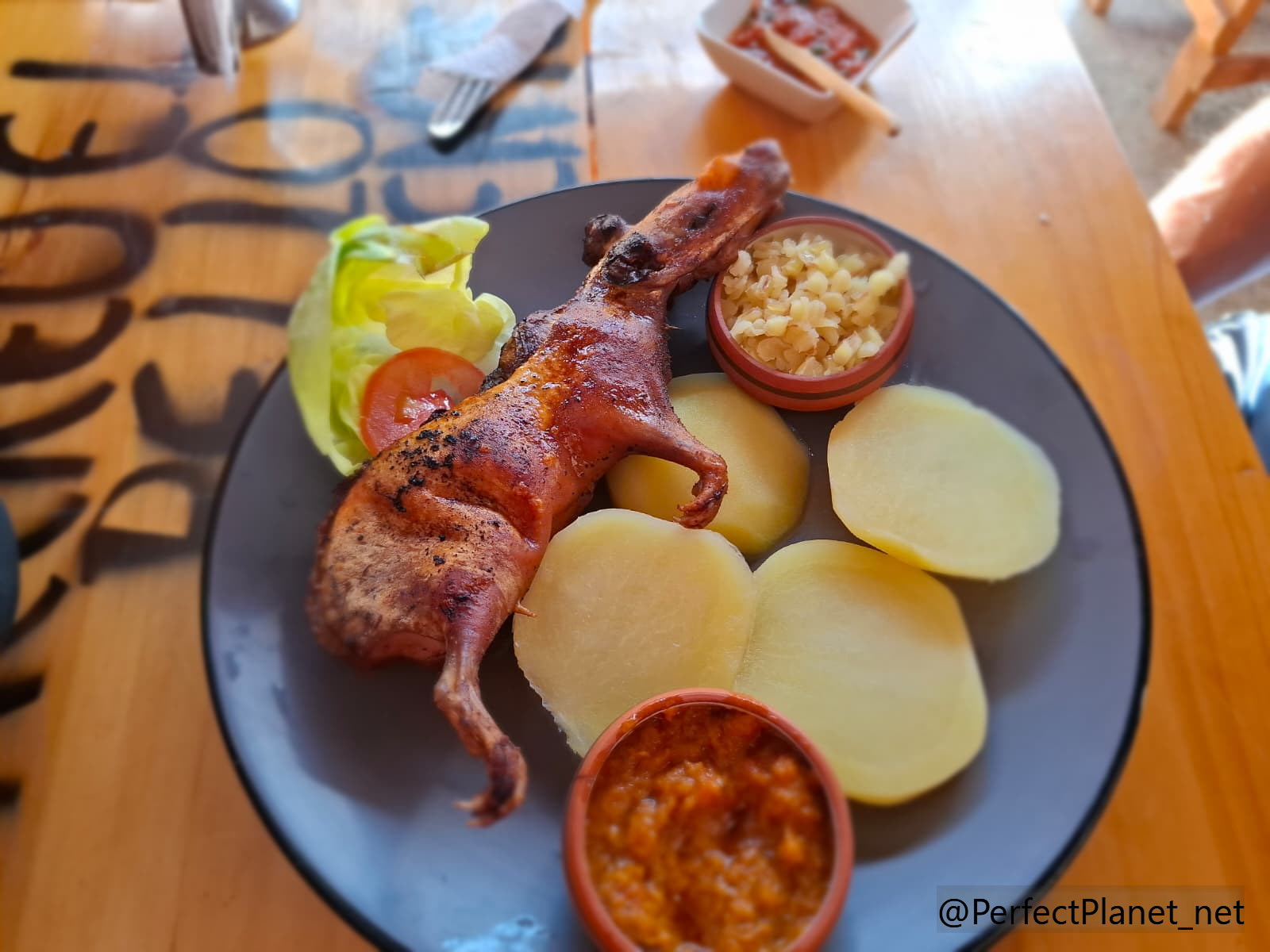
Cuy
Lomo saltado. This can be made with beef or alpaca. It is meat stewed with vegetables and served with rice.
Alpaca meat. Grilled alpaca is delicious, with a flavour similar to horse meat but less sweet. It's in our top 3 best dishes in Peru. Recommended place El Extraño in the San Blas Market in Cuzco and the restaurant Sara Peruvian in Machu Picchu village.
Avocado. Avocado is amazing, whether in a sandwich, appetiser or smoothie.
Tropical fruits, whether in juice, smoothies or salads, are incredible. Passion fruit is one of our favourites.
Sanguchos. Grilled meat sandwiches with vegetables.
Ají de gallina. Cream with shredded chicken accompanied by potatoes, egg, black olives and rice.
Quinoa. The way they prepare quinoa is spectacular, and not just as a side dish. They make a kind of soup with water, pineapple and quinoa for breakfast that is delicious.
They also have up to 3,000 different varieties of potatoes that are incredible in all their forms.
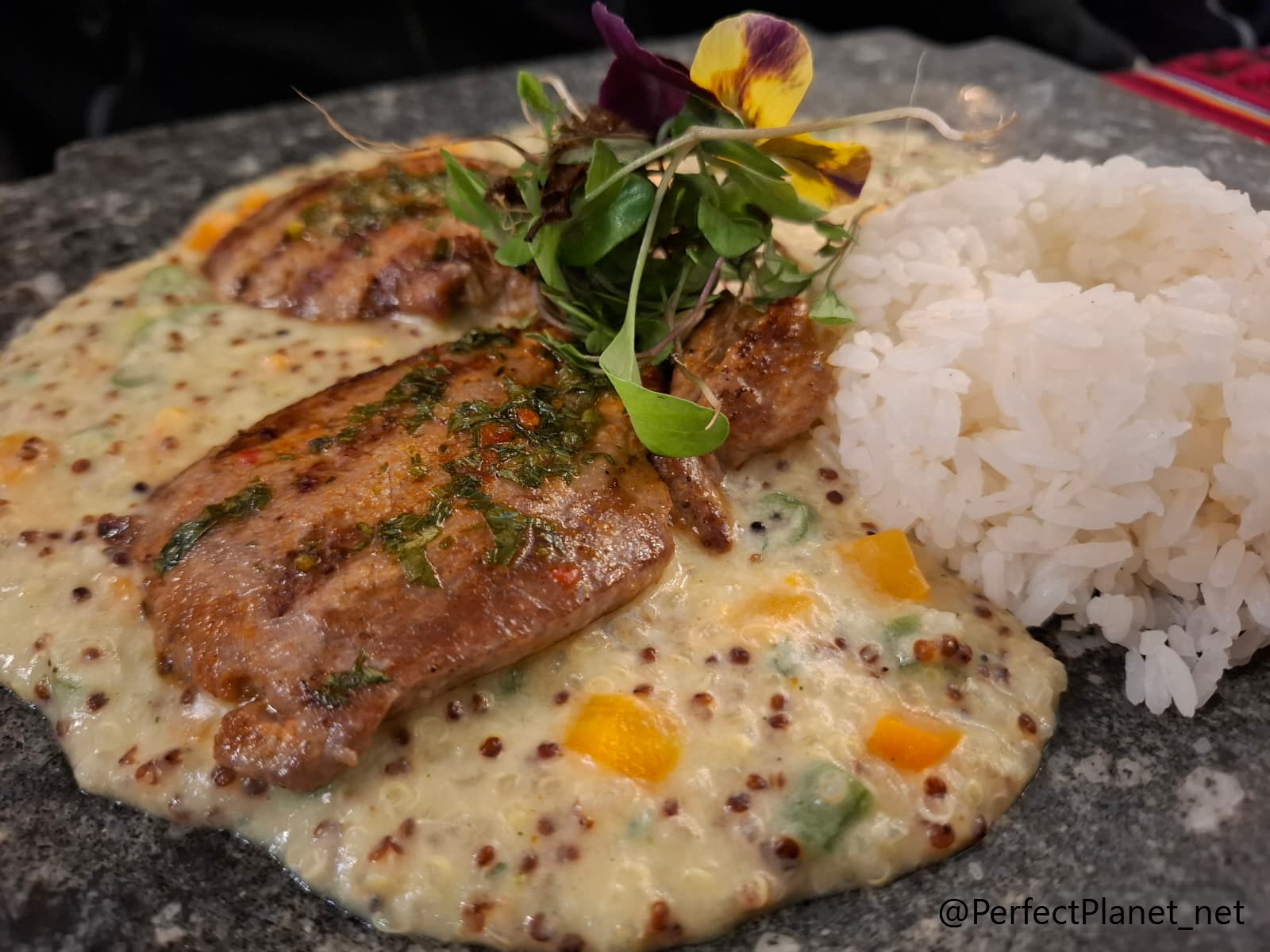
Alpaca grilled
Drinks
Coca and muña tea. Both have soothing digestive effects and help with altitude sickness.
Chicha morada. A drink originating in Peru made from purple corn or maize, sometimes sold with alcohol.
Beer. For us, Cuzqueña is the best.
Pisco sour. A drink made with pisco, lemon, syrup and egg white.
Inca Cola. This soft drink with an indescribable flavour and a high sugar content is a tradition in Peru.
Our restaurant recommendations
In Huaraz, Superchocho restaurant; in Cuzco, Green Point vegan restaurant and any stall in the San Blas Market; in Aguas Calientes, Sara Peruvian restaurant; in Arequipa, Nueva Palomino picantería.
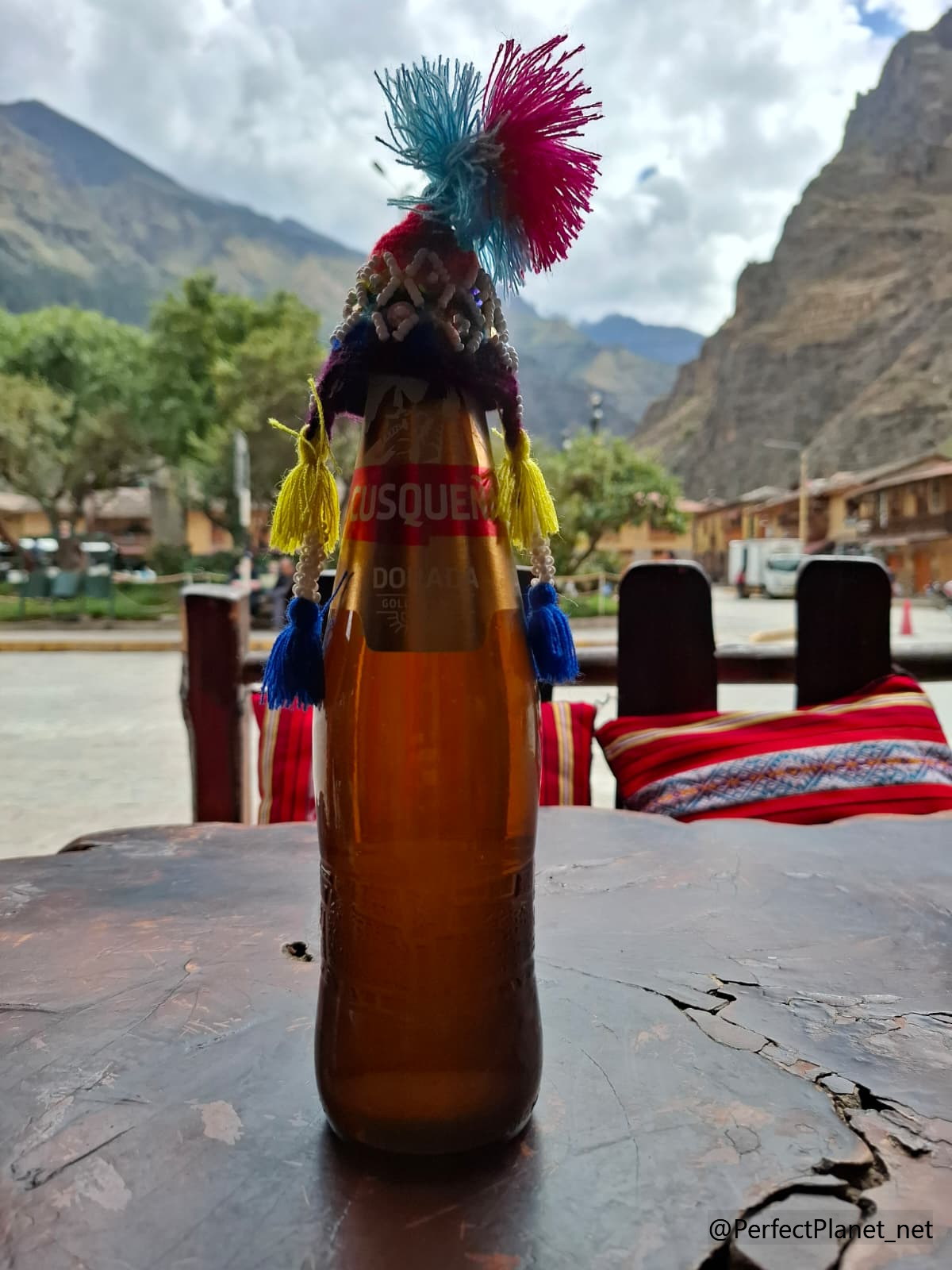
Cusqueña
Connectivity
In Peru, you can buy a physical SIM card from Claro, Entel, or Movistar. The easiest one to find at Lima Airport is Claro. But we recommend (if your mobile phone allows it) that you use AIRALO's E SIM. 10 GB for €26 for 30 days. It has very good coverage.
You can also purchase a SIM card in your home country, but it is usually more expensive.
If you do not want to purchase a card, remember that there is Wi-Fi in almost all accommodations and restaurants.
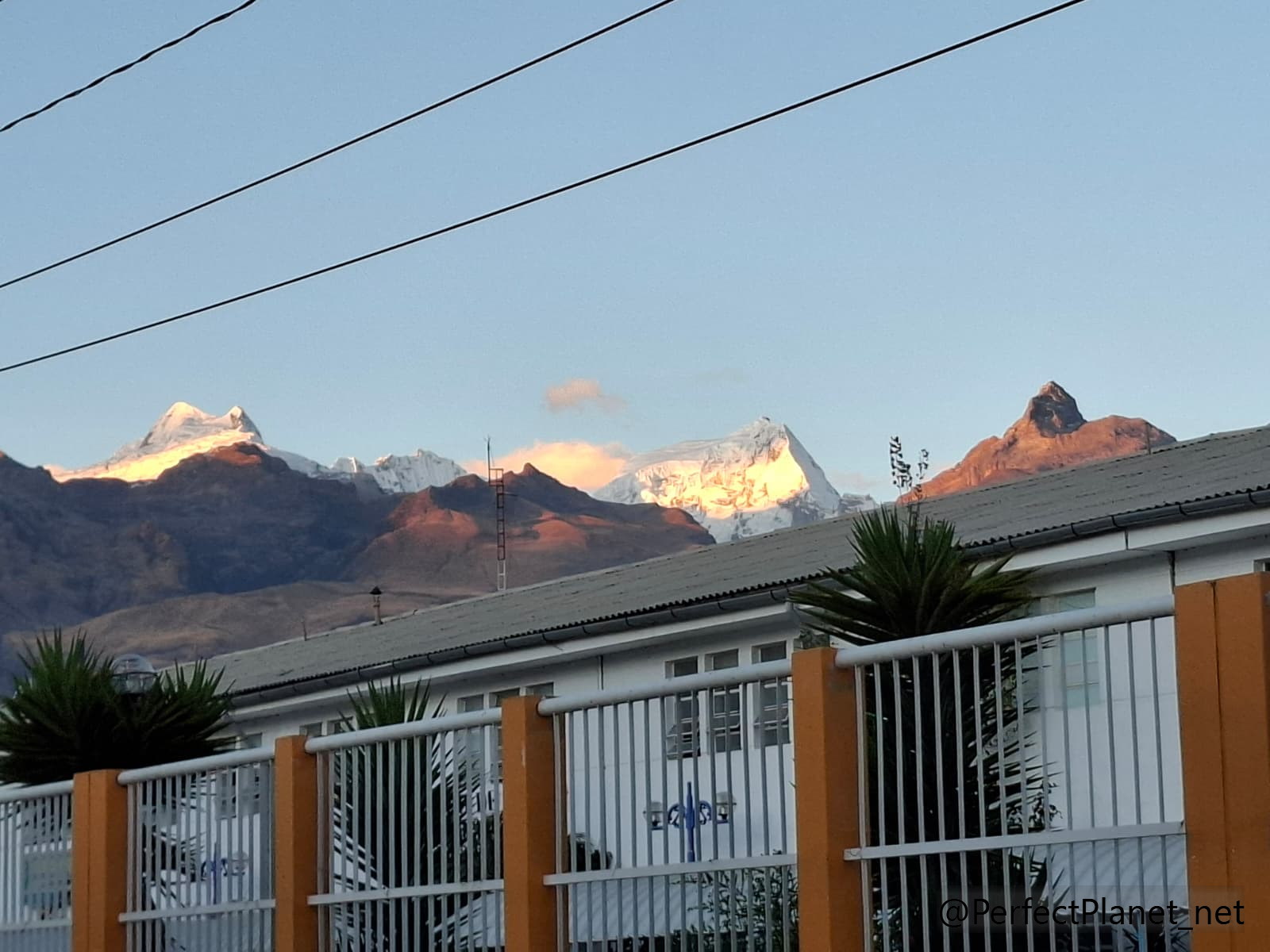
Huaraz
Activities
Peru offers a wide variety of activities and experiences. Light aircraft flights over the Nazca Lines, mountaineering, high mountain trekking, exploring the Amazon river, cultural visits, cookery courses, wildlife watching, extreme cycling... as you can see, the possibilities for discovering the country are endless.
We did three treks on our trip to Peru: the Huayhuash trek, the Salkantay trek and the two-day Colca trek.
You can do the Huayhuash trek on your own in survival mode or with an agency. If you don't want to carry all the weight during the 5 or 8 days of the trek, we recommend that you hire an agency in Huaraz. We recommend Franpisco Adventure, an extraordinary team. We'll tell you more in the blog.
Map
Salkantay trek. Five-day trek to Machu Picchu. You can do it with an agency (between £200 and £300 per person) or on your own (£80 per person). It's cheaper to do it on your own, there are many places to stay along the way and you don't need to carry a tent or sleeping bag. We did it on our own and loved it. We'll tell you more in the blog.
Map
Two-day trek through Colca Canyon. They say this canyon is one of the deepest in the world, the longest (about 100 km) and the most accessible for seeing the king of the Andes, the condor. You can do the typical visit to the viewpoints or venture into the depths of the canyon like we did. We'll tell you more here.
Map
Society
Peruvian society is open to travellers. It is made up of a multiplicity of ethnic groups, the best known being the Quechua and Aymara, but there is a wide variety of communities with different customs and traditions.
Its ethnic and gastronomic wealth make Peru an exciting destination.
Today, it remains a male-dominated society where men are the main source of income in households.
Unfortunately, crime and corruption continue to be the country's main problems.

Women at the market
- Log in to post comments

